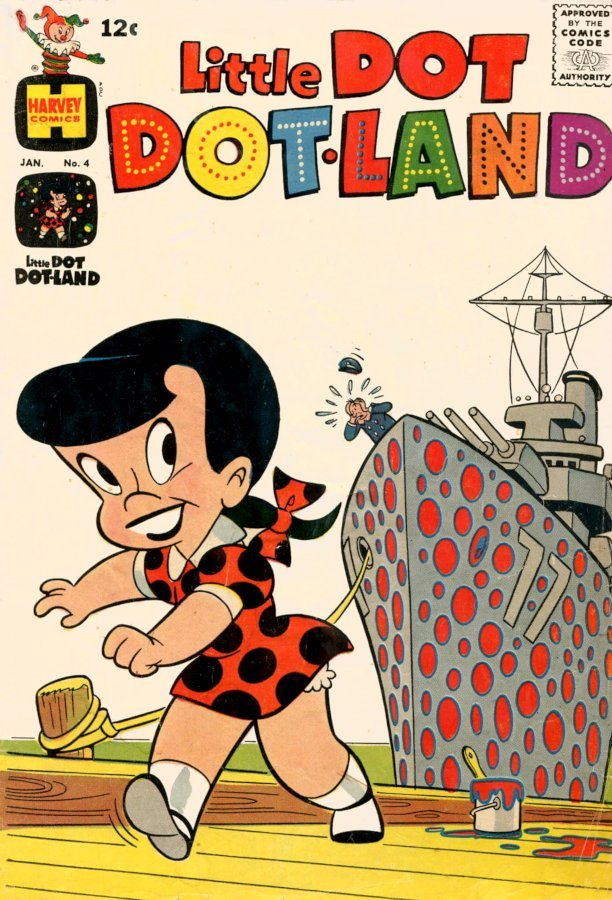Badger's eve view: Roshi Kremer's Little Dot

There’s a communal experience, close to religion, of art being “important”. From Taylor Swift to the Beatles to Handel’s Messiah, society has said this is good. As a serious young man of 12, cartoon kiddie comics fell flat. I was into mature art like the Pre-Raphaelites and Barry Smith.
As I got older real art, Cezanne, Matisse, Donald Judd and Joan Mitchell became important. Writing these essays has me thinking about art actively, not just living with my perfectly right opinions of what makes this work good. Writing has taught me to look again at pictures I like and don’t like.
So when Jim Thompson of the Facebook Group “a People’s History of comics” started posting Harvey kiddie comic covers of Casper, Hot Stuff, Little Dot from the 50’s and sixties, it wasn’t important to 12 year old me or 64 year old me. I’ve grown beyond such childish things. Then I looked at it.

Writing about uncomics, I’ve learned to see again. My interests are the formal construction and interrelationship of shape. Cute cartoons, anymore then superheroes, don’t provide what I look for in art.
Warren Kremer, the artist of the covers, can draw a big honking nose on the moon. But centers it in the arc of the moon, and Casper’s motion arc. The nose reflecting the curves — is it a joke or is it Russian Constructivist construction? Or both?

Sometimes the figure drawing is almost Matissian in it’s purity, as in Little Lotta with the banana peel. His gags seemed kind and deeper somehow then the usual kiddie comic. But the composition seems superior to most comic covers all together and I was charmed.
Little Dot covers seemed the most “profound” to me. Sometimes she sees dots out of nothing, sometime she uses dots and sometime she makes dots. Here she transforms an iconic battleship with dots. I suppose it’s a terrible over-reading to see the joy in her smile as the whole world becomes her dots to play with.

We all know someone for whom everything revolves around one thing, often themselves. Most of us see the battleships ships in our lives as war. Dot takes her battleship and turns it into an occasion for joy.
Is this why Dot is so bouncy? Or what in this picture makes me see joy in the alignment of lines? Dot after all is just a fabrication in my head, driven by an arrangement of line and color.
Kremer locks the horizontal with the horizontal water and pier lines to it’s frame. The pier’s perspective zips to the paint can, balanced by the post on the left, A stage for Dot to bounce on is created.
The Dotified ship, its prow center line vertical to contrast with the stage. The hull’s top two curves and side, with that vertical at the apex where two sides meet make it almost the equal size of Dot. The ship takes a bit of the third.
But the large shape, instead of dominating, stands against the hyperactive joy of Dot. The short curves of her gestures bounce against the battleships large shape. They have magically transformed a serious ship into a polka dot canvas.
Her arms pump as she walks.
Her dots solid black on her red skirt.
Provide us with the essential element of an art, like a Malevich square.
Is this the real joy of making art?
You take the grim seriousness of life and transform it with simple shapes, Arcs of a skirt, a hairdo that is a massive shape of black smoothness. But it’s joy to leave her mark on the world as she walks away.

To comment, please send an email to submissions@uncomics.org.
Any comments may be subject to publication on this site only. Your contact information will not be shared with third parties.